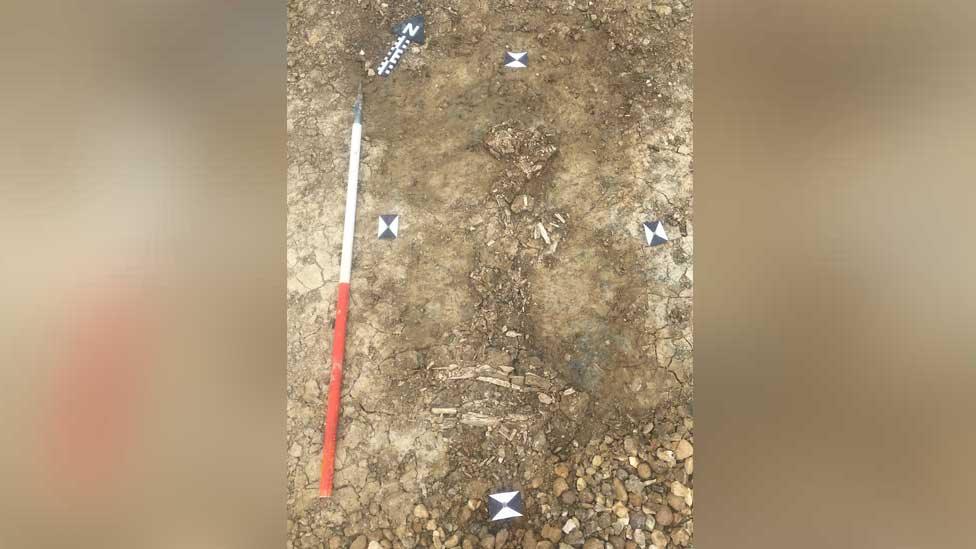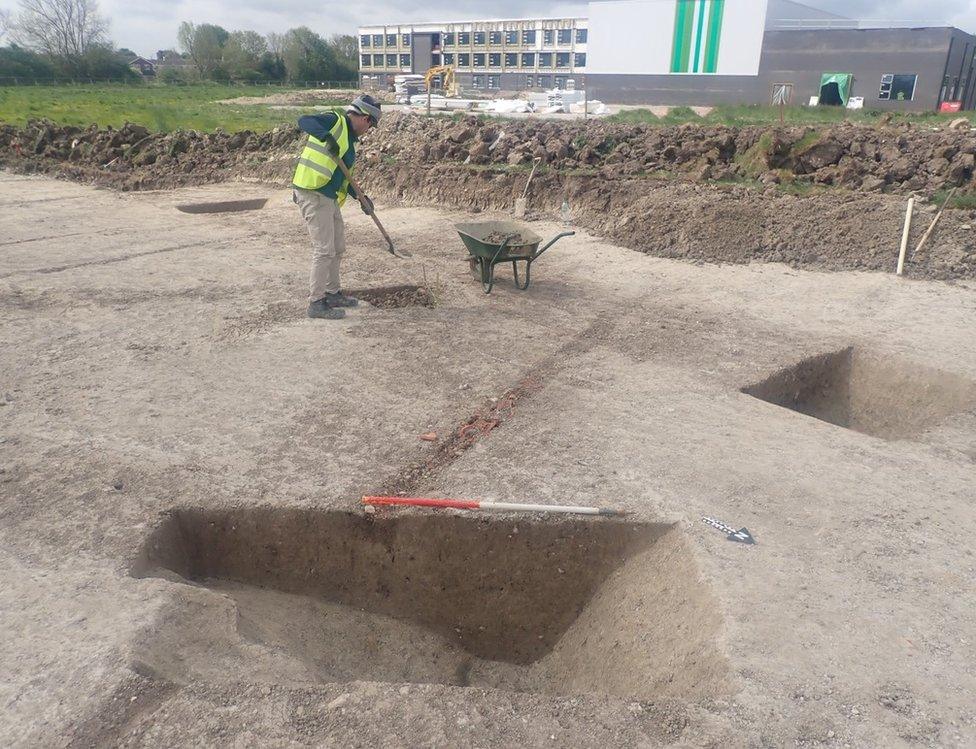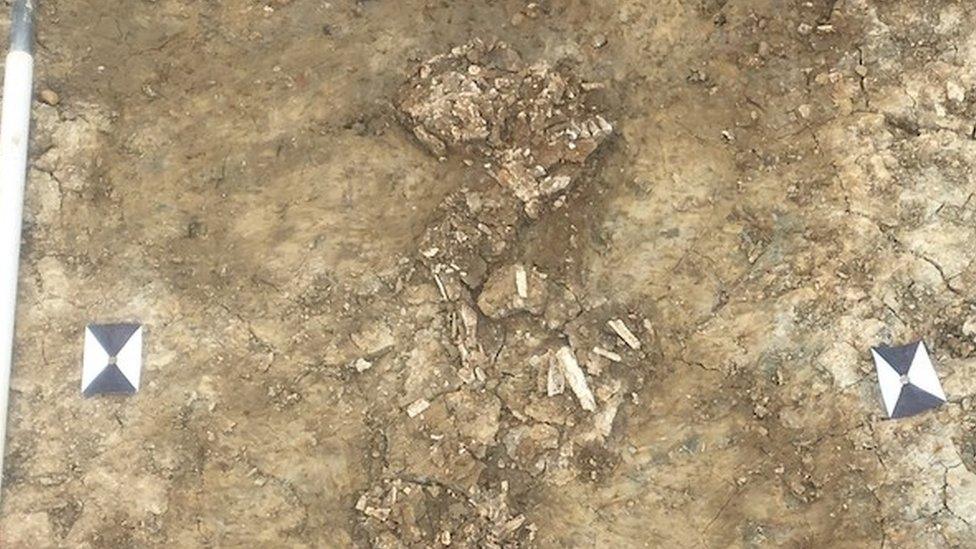Houghton Regis: Houstone School's ancient finds are 'regionally significant'
- Published

Human remains found at the site are thought to be about 4,500 years old
Neolithic, Roman and Bronze Age remains found where a school is being built are "regionally significant", an expert said.
The discoveries, including an ancient burial site, have delayed the opening of the Houstone School in Houghton Regis, Bedfordshire.
A ring-ditch, a line of 11 Bronze Age pits, plus late Iron Age and Roman ditches and pits were also uncovered.
Project manager, Wesley Keir, said they gave "insight into ancient land-use".
Mr Keir, from Albion Archaeology, said the remains were "evidence of activity going back to the Late Neolithic/early Bronze Age period, about 4,500 years old".
The earliest feature is the ring-ditch, which is part of a barrow or funerary monument, one of several found within the surrounding area.


A line of 11 Bronze Age pits, about 4,000 years old, represent an ancient boundary
The discoveries include:
A ring-ditch which is part of a late Neolithic/early Bronze Age barrow or funerary monument, about 4,500 years old
A human skeleton, placed in a crouched position within a pit near the barrow, suggesting it is likely to be of a similar date
A line of 11 Bronze Age pits, about 4,000 years old, which represent an ancient boundary stretching for at least 30m (98ft), containing fragments of Bronze Age pottery and animal bone
Various other late Iron Age/Roman (200BC-AD400) ditches and pits associated with a large settlement previously investigated within the Linmere development to the east of the Houstone site, in which pottery, animal bone, and other domestic artefacts were found

But he said that all the finds at the school - including the the Bronze Age pit alignment and Iron Age and Roman settlement remains - should "not be seen in isolation".
In recent years, the whole wider Bedfordshire area within which the school lies has seen various archaeological investigations undertaken, including those in advance of the Linmere development, external, which lies immediately to the east of the Houstone site.
Iron Age and Roman settlements have been excavated there which show that between the 1st Century BC and 3rd Century AD, the area was home to a series of farmsteads linked by routeways running through the surrounding fields.

The outline of a Bronze Age round barrow was uncovered at the school site
So the school site discoveries "represent activity within a landscape of Bronze Age, Iron Age and Roman settlements and field systems", Mr Keir said.
Together with the wider archaeological investigations, they "provide a unique and regionally significant insight" into the area's history.
"As important as the archaeological features found within the Houstone site are, their greatest significance lies in the fact that they add to this growing body of evidence of the ancient land use of the area," he said.
"The findings will enable the children of Houstone School and residents of Houghton Regis, to envisage that they're walking in the footsteps of people dating back to at least 4,500 years old."
Mr Keir added that more is "gradually being revealed" as investigations are continuing to be undertaken within the area.

Albion Archaeology said the finds at the school site should "not be seen in isolation"

Find BBC News: East of England on Facebook, external, Instagram, external and Twitter, external. If you have a story suggestion email eastofenglandnews@bbc.co.uk
Related topics
- Published15 June 2022
